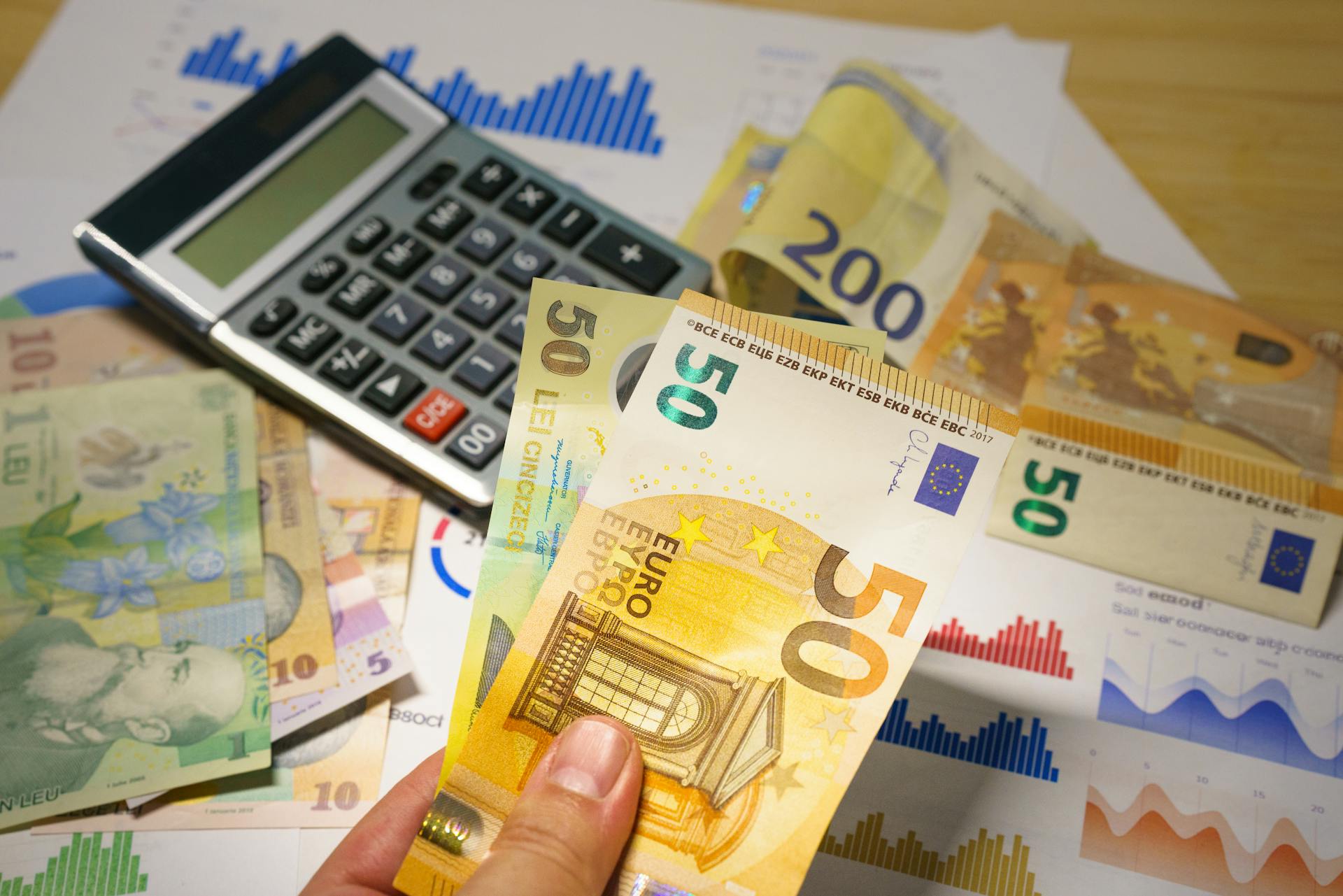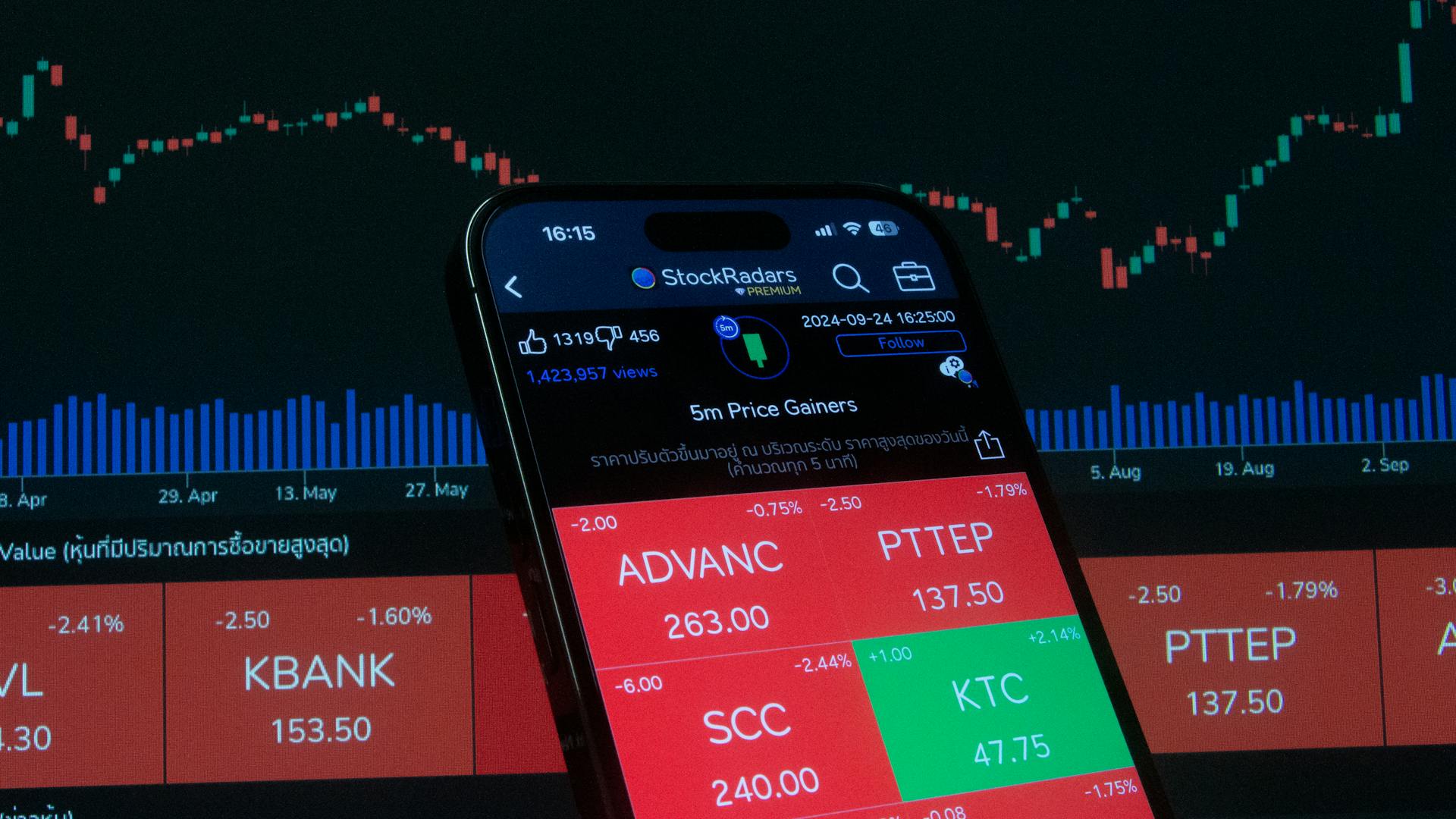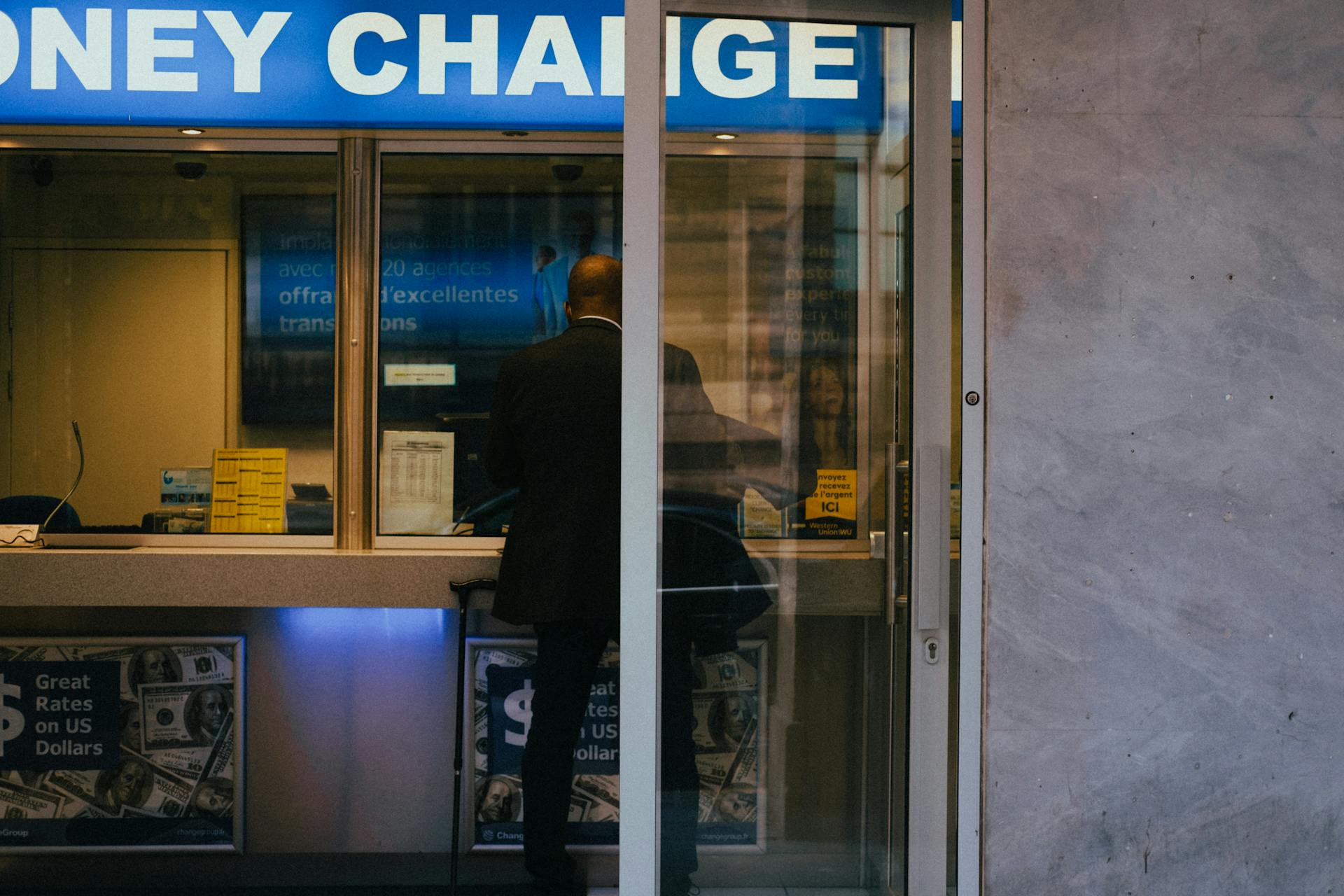
FX forward rates are a crucial tool for businesses and investors looking to manage foreign exchange risk. They allow you to lock in an exchange rate for a future transaction, giving you certainty in an uncertain market.
FX forward rates are determined by the spot rate and the interest rate differential between two currencies. This means that if you're a US company looking to buy euros in six months, the forward rate will depend on the current spot rate and the difference in interest rates between the US and the eurozone.
Understanding FX forward rates is essential for businesses with international operations or investments. By using forward contracts, you can protect your business from exchange rate fluctuations and make more informed decisions about your foreign exchange transactions.
A forward contract is a binding agreement between two parties to exchange a specific amount of one currency for another at a set exchange rate on a specific date in the future. This can be a useful tool for managing risk, but it's essential to understand the terms and conditions of the contract.
Here's an interesting read: Historical Fx Spot Rates
Understanding FX Forward Rates
Understanding FX Forward Rates is crucial for anyone involved in international trade or investment. Forward rates are contractual obligations that must be honored by the parties involved, and they're widely used for hedging purposes in the currency markets.
A forward rate is the exchange rate agreed upon today for a future delivery of a currency pair, allowing you to lock in the exchange rate today and avoid the uncertainty of the spot rate. For example, if you're an importer who needs to pay for goods in euros in three months, you can buy a forward contract that specifies the amount of euros you'll receive and the amount of US dollars you'll pay in three months.
The forward rate depends on the spot exchange rate, the domestic interest rate, and the foreign interest rate, which are used to calculate the forward price. The interest rates used to determine forward points are based on the base lending rates of the central banks for the currencies being used.
Here's a breakdown of the key factors that affect FX forward rates:
Unbiasedness Hypothesis
The unbiasedness hypothesis suggests that the forward exchange rate is an unbiased predictor of the future spot exchange rate. This means that the forward rate is expected to converge to the actual future spot rate.
Investors can eliminate exposure to foreign exchange risk using a forward contract, which effectively covers the exchange rate risk. The forward rate is the price of a forward contract, derived from the pricing of spot contracts and interest rates.
The forward exchange rate depends on three variables: the spot exchange rate, the domestic interest rate, and the foreign interest rate. If these rates are equalized through a forward contract, there would be no arbitrage opportunities.
Interest rate differentials between currencies are calculated based on the base lending rates of central banks. A 6% differential between the US dollar and Mexican peso means a 3% premium for a six-month forward contract.
In theory, the forward price should always be calculated strictly on current interest rate differentials. However, other factors like expected changes in interest rates or market volatility may influence the pricing of a forward rate.
Check this out: National Spot Rates
Understanding
Forward exchange rates can be a bit tricky to understand, but they're actually quite useful for importers and exporters who want to lock in a specific exchange rate for a future transaction. The forward rate is the exchange rate agreed upon today for a future delivery of a currency pair.
For example, if you're an importer who needs to pay for goods in euros in three months, you can lock in the exchange rate today by buying a forward contract that specifies the amount of euros you will receive and the amount of US dollars you will pay in three months.
The forward rate is based on the spot rate, which is the present market rate for a financial instrument's immediate exchange or settlement. However, the forward rate factors in expected changes in market conditions, making it a more accurate prediction of where the spot rate will be in the future.
Explore further: Norwegian Currency Conversion
Here's a key difference between spot and forward rates: spot rates deal with the present and are known quantities, while forward rates deal with the future and involve an element of prediction. This distinction makes forward rates particularly useful for financial planning and risk management.
For instance, if the spot rate for USDMXN is 18.00, a six-month forward would be priced at 18.54 (18.00 plus 3% of 18.00), taking into account the interest rate differential between the two currencies.
Using forward exchange rates can help importers and exporters reduce their exposure to currency risk and plan their cash flows more accurately. By locking in the exchange rate today, they can avoid the volatility and uncertainty of the spot market and budget their costs and revenues more effectively.
For another approach, see: Market Exchange Rate
Forward Contracts
Forward Contracts are a way for businesses to secure a fixed exchange rate for a future currency transaction. This is achieved through a binding contract that locks in an agreed exchange rate for a specific amount.
The forward contract is calculated using a standard formula that takes into account the difference between interest rates and the time to maturity of the contract. The system adjusts the market spot rate for a 'forward point' when calculating the forward rate.
A forward contract is automatically agreed once the currencies are paired, the total amount to be traded, and the agreed exchange rate have been agreed upon. This provides a level of certainty and stability for businesses engaging in international trade.
Here's a simplified breakdown of the key components involved in a forward contract:
- Forward point: the adjustment made to the market spot rate when calculating the forward rate.
- Interest rate difference: the difference between interest rates of the currency pair.
- Time to maturity: the duration until the contract is settled.
Forward Contract
A forward contract is a type of agreement that allows businesses to lock in an exchange rate for a future transaction.
The system calculates the forward rate by adjusting the market spot rate for a "forward point." This point takes into account the interest rates between the currency pair and the time to maturity.
The formula used to calculate forward points is standardized across the industry, and our experts at Trade Finance Global follow this formula.
The forward contract is formed by pairing the currencies, determining the total amount to be traded, and agreeing on an exchange rate. Once this information is agreed upon, a binding contract is automatically created.
Here's a simplified overview of the forward contract calculation process:
- The system adjusts the market spot rate for a "forward point."
- The difference between interest rates between the currency pair and time to maturity is calculated.
- A standard formula is used to calculate forward points.
Contract Example
Forward contracts can be a bit tricky to understand, but let's break it down with a simple example.
ABC Factory in Edinburgh is looking to buy motorbikes from Taiwan, and they agree to pay USD $500,000 in 3 months.
The current exchange rate at the time of the deal is GBP £1.00 = USD $1.32, so ABC Factory expects to pay GBP £378,788 for the equipment.
In 3 months' time, the exchange rate changes to GBP £1.00 = USD $1.25, which means ABC Factory will actually pay £377,142.
This example shows how a forward contract works: ABC Factory locks in a price for the motorbikes at the current exchange rate, and they're protected from any potential changes in the exchange rate over the next 3 months.
Here's a summary of the exchange rates:
Calculating FX Forward Rates
The spot exchange rate serves as the basis for calculating the forward rate. This rate is the exchange rate for the currencies being traded at the time the contract is initiated.
To calculate a forward price, you need to determine the value of the interest rate differential between the two currencies and multiply that difference by the time to expiration of the contract. This is done by finding the difference between interest rates between the currency pair and time to maturity.
The forward rate can be calculated using the spot rate and the interest rates of the two currencies involved. The formula for calculating the forward rate is as follows: Forward Rate = Spot Rate × (1 + Interest Rate of Base Currency) / (1 + Interest Rate of Quote Currency).
The forward exchange rate differs by a premium or discount of the spot exchange rate, reflecting the interest rate differential between two countries. This premium or discount is calculated using the following equation: Forward Exchange Rate = Spot Exchange Rate × (1 + (Interest Rate of Base Currency - Interest Rate of Quote Currency) / 100) × (Number of Days to Delivery / 365).
Suggestion: Discount Rate vs Internal Rate of Return
Here's a table summarizing the key factors to consider when calculating FX forward rates:
By understanding these factors and using the correct formulas, you can accurately calculate FX forward rates and make informed decisions about your currency transactions.
Example and Calculation
Let's take a closer look at how to calculate the forward rate for currencies. The spot exchange rate serves as the basis for calculating the forward rate, and the interest rates of the two currencies involved are also taken into account.
The formula for calculating the forward rate is: Forward Rate = Spot Rate × (1 + Interest Rate of Base Currency) / (1 + Interest Rate of Quote Currency). This formula helps to determine the future exchange rate of two currencies based on the current spot rate and interest rates.
For example, let's say the spot rate for GBP/USD is 1.25 and the interest rate for the pound is 5% while the interest rate for the US dollar is 3%. Using the formula, we can calculate the forward rate as follows: Forward Rate = 1.25 × (1 + 0.05) / (1 + 0.03) = 1.2625.
Here's a table summarizing the key factors to consider when calculating the forward rate:
By understanding how to calculate the forward rate, you can make more informed decisions about your currency trades and investments. Remember, the forward rate is a crucial component in determining the future value of a currency, and it's essential to consider the interest rates of both currencies involved.
Hedging Can Generate Profits
Hedging can indeed generate profits, not just protection against exchange risk. Most hedges are initiated because of perceived exchange risk, but they can also benefit financially from interest rate differentials.
The USDMXN example shows how a six-month FX forward contract can be sold short at 18.54, collecting the difference from the spot rate of 18. This is the hedging variation of a common speculative strategy referred to as the carry trade.
If the hedger is going the other way, they'll have to pay the forward points to enter the transaction, which can be a drawback. However, forwards are not the only tool for hedging purposes, and Pangea has access to a broad range of financial instruments that can be better alternatives depending on the situation.
A thorough analysis of the risks and desired outcomes is essential to determine the most suitable hedging product. This might involve using futures, swaps, or options, each with its unique characteristics and benefits.
Traders can use forward rates to identify potential arbitrage prospects, but such strategies involve risk and are rare in efficient markets.
Frequently Asked Questions
What is the difference between spot and forward exchange rate?
Spot and forward exchange rates differ in their application: spot rates are used for immediate transactions, while forward rates are agreed upon for future transactions
Sources
- https://en.wikipedia.org/wiki/Forward_exchange_rate
- https://www.tradefinanceglobal.com/currency/forward-contracts/
- https://www.pangea.io/learn/how-fx-forward-contracts-and-interest-rate-differentials
- https://www.investopedia.com/terms/f/forwardrate.asp
- https://www.linkedin.com/advice/0/what-forward-exchange-rate-how-can-you-upjqe
Featured Images: pexels.com


